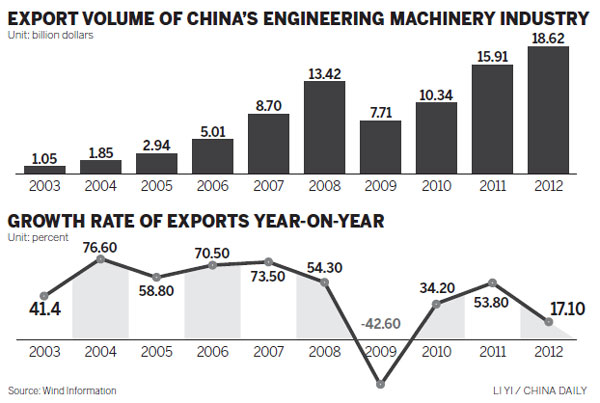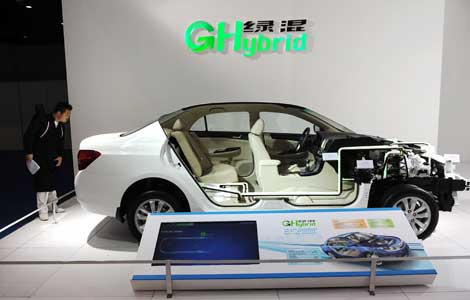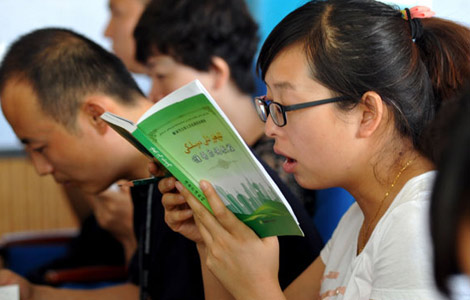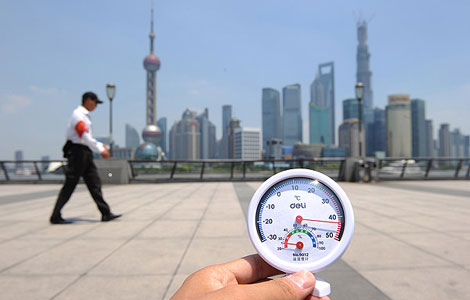Machinery exports at low ebb in first half
Updated: 2013-08-07 07:16
By Du Juan (China Daily)
|
||||||||

Growth in China's machinery exports slowed to a crawl in the first half of the year, hurt by weak demand amid an economic slowdown, said a senior official of an industry federation on Tuesday.
First-half machinery exports were up just 1.5 percent year-on-year to $175.3 billion, the China Machinery Industry Federation said. The year-earlier growth rate was about 9.3 percent.
Compared with the country's total export growth in the first half, the machinery industry's export growth rate was 8.9 percentage points lower.
"Last year, machinery exports grew 8 percent, which is unlikely to happen this year, given current conditions," said Cai Weici, vice-president of the federation.
In June, machinery exports actually declined, falling 4.6 percent to $29.9 billion.
However, Cai said the European and US markets have been improving since April.
"If Chinese machinery companies make a strenuous effort to adapt their products better for foreign markets, it is possible that export growth will be the same as last year."
Major companies in the industry reported orders increased slightly during the first half, compared with shrinking orders last year. First-half orders for major companies grew 3.8 percent, the federation said.
Cai forecast that total industry profits will grow 8 percent this year considering the challenges facing the industry, including weak domestic demand and slow export growth.
First-half industry revenues rose 12.9 percent to 9.45 trillion yuan ($1.53 trillion), with profits of 600 billion yuan, up 12.6 percent.
However, about 12,000 machinery producers, or 16 percent of all companies in the sector, recorded losses in the first half. That was still an improvement from the start of the year, when 22 percent of companies in the industry were losing money.
Cai said companies should step up efforts to develop new technology and products, as demand for traditional machinery products is falling rapidly. If companies can't offer higher value-added products for export, the harsh conditions will persist, said Cai.
Gabriela Schulz, a freelance writer for a German construction magazine, said that Chinese companies should expand their distribution networks in Europe to gain market share.
Cai said it is important that companies should explore new markets, reduce costs with new technology and increase their profits by replacing imports.
Some Chinese companies have achieved some success in these areas.
Cai noted the growth rate of machinery imports also fell off during the first half as many domestic companies have been making products that had to be imported in the past. Many of these products are used in power grids and vehicle manufacturing.
The vehicle manufacturing sector, which has seen rapid growth in the Chinese market in recent years, is also facing a weak overseas market, said Dong Yang, deputy chief of the China Association of Automobile Manufacturers.
"However, China's auto export growth will keep growing in the coming years, because it has a relatively lower export ratio compared with other machinery manufacturing industries," he said.
Most Viewed
Editor's Picks

|

|

|

|

|

|
Today's Top News
Air force can help combat crowded skies, experts say
China sets no timetable for family planning update
Japan's new warship draws fire
Snowden obtains formal registration
Maiden flight in holding pattern
Small firms should also think global
NBA courts Sina Corp
Govt to court private capital
US Weekly

|

|












